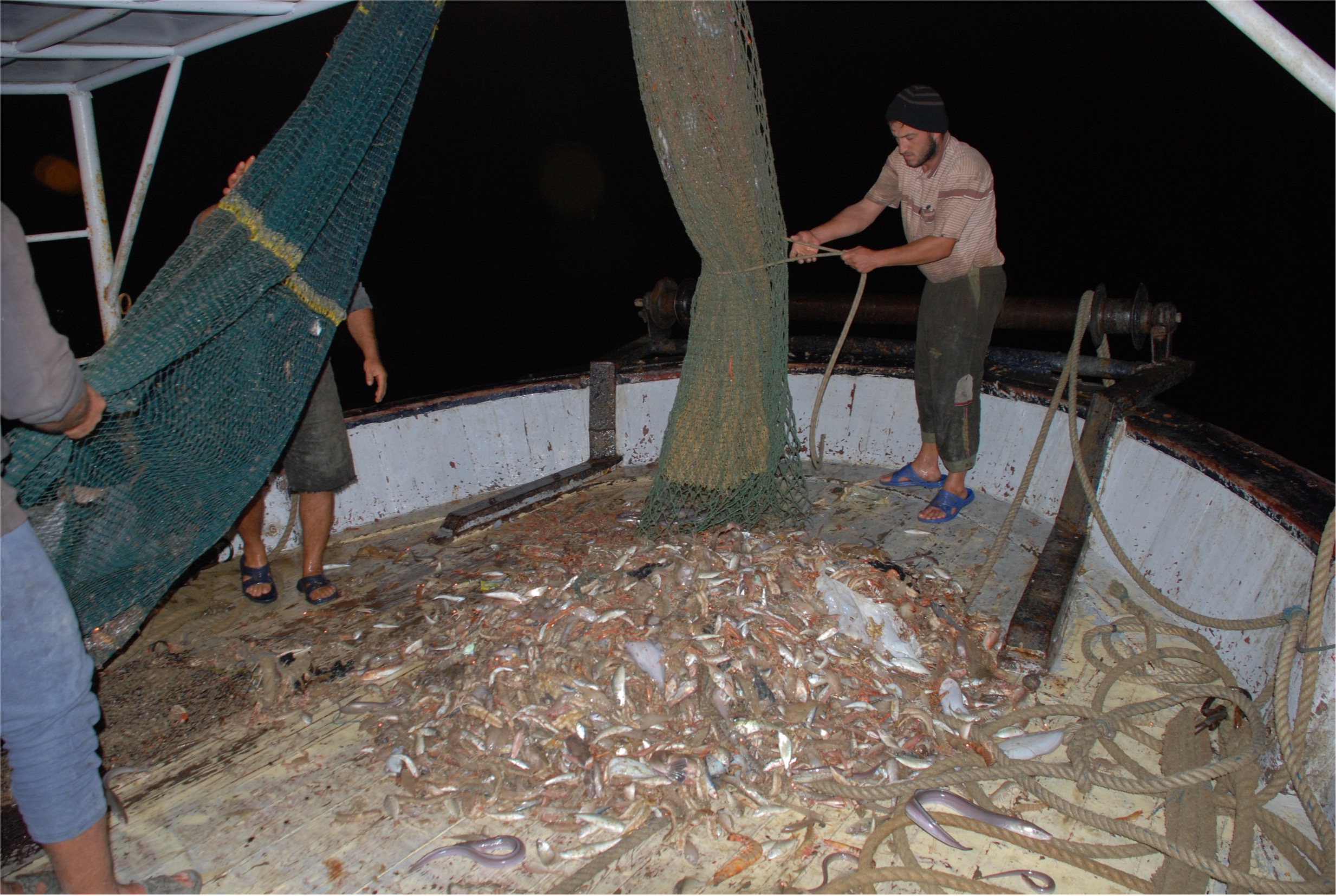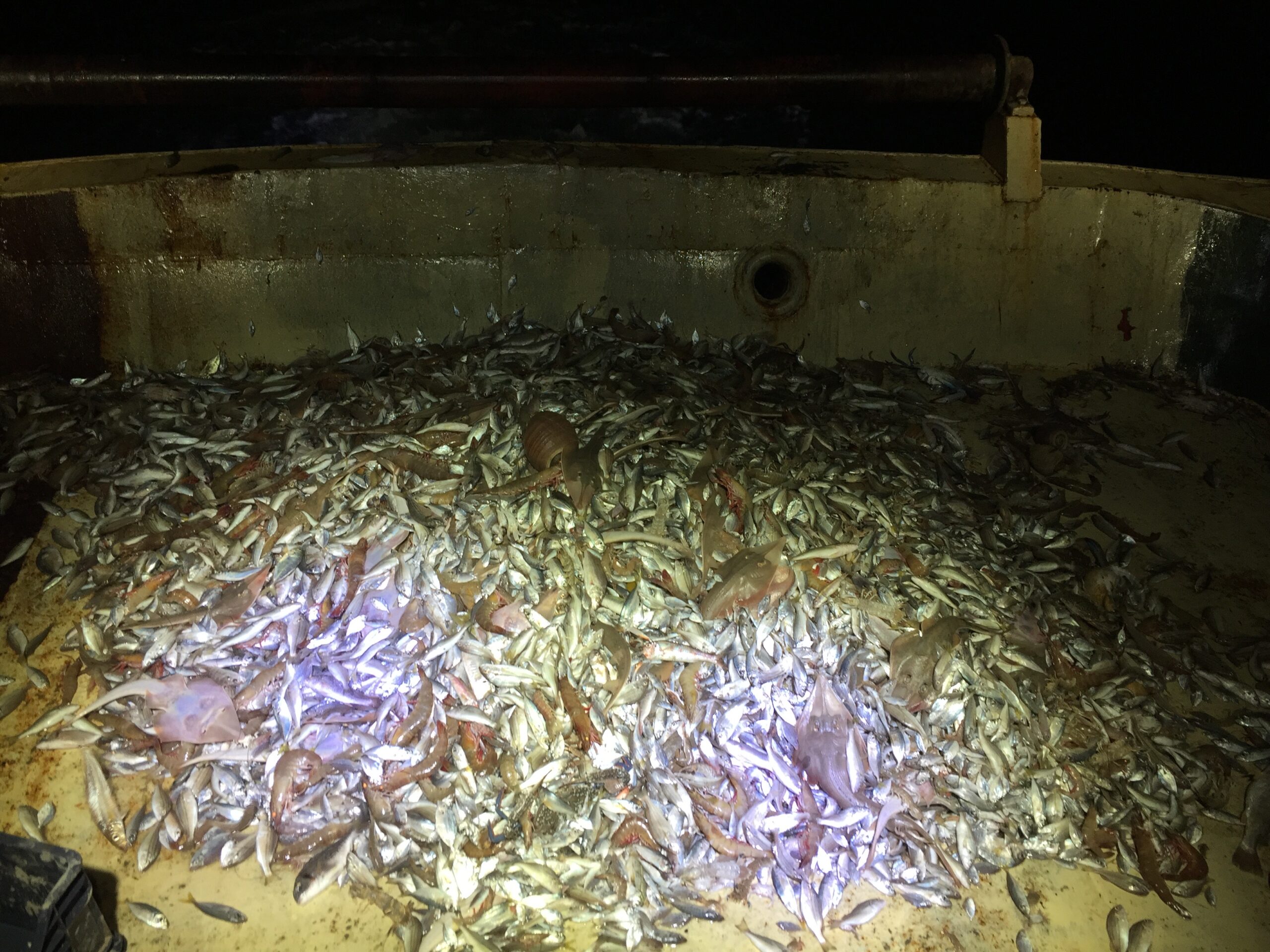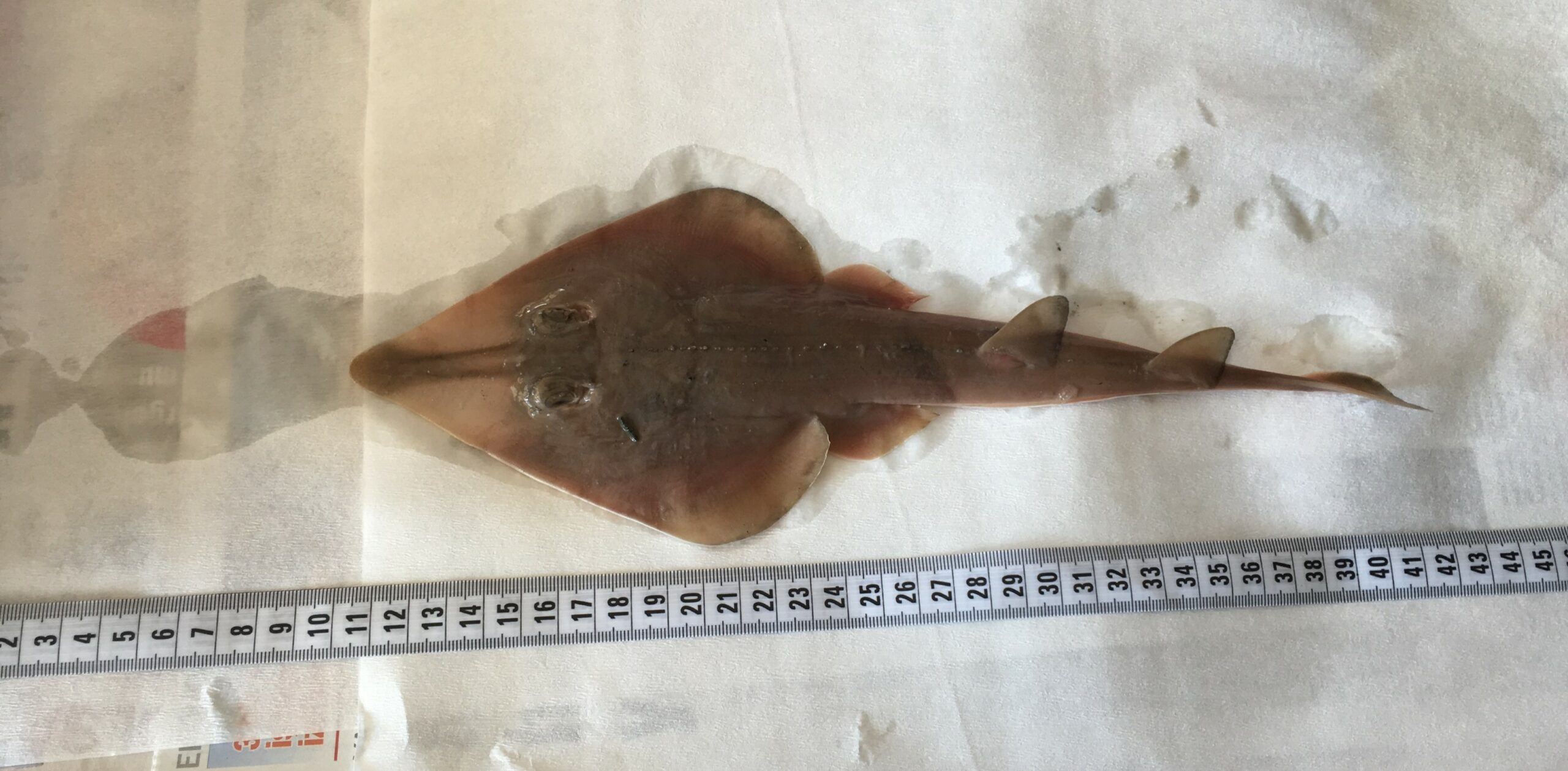Sea Surveys: Understanding the Overlap with Fishers’ Knowledge
As a reminder, the primary goal of our project is to identify overlaps between critically endangered guitarfishes and bottom trawling activities along the Mediterranean coast of Türkiye. We hope that this knowledge will serve as a critical baseline for developing conservation recommendations for policymakers. To achieve this, we have engaged fishers’ knowledge through a citizen science approach, utilizing local ecological knowledge gathered via semi-structured interviews. Our findings have already indicated a potential spatial and temporal overlap between trawling activities and juvenile guitarfishes. Please see our previous blog posts for detailed information on our methods and results.
This blog post focuses on the sea surveys conducted to validate fishers’ knowledge and gather quantitative data by joining commercial trawl operations. The primary principle guiding these surveys was to respect the fishers’ natural behaviour, ensuring that the data collected represents typical fishing operations. The first step was to identify trawl fishers willing to allow us to join their operations while maintaining their usual practices as if we were not on board. We employed two approaches to collect fisheries-based survey data. First, we boarded trawlers operating in areas identified by fishers’ knowledge to validate their insights. Second, we joined random trawl operations from various fishing ports within the research area to gather data reflecting fishers’ natural behaviour in selecting fishing grounds. This second approach allowed us to confirm that fishers reported a relatively low catch rate for guitarfishes.

Respecting fishers' natural behaviour. An essential key approach. Photo © Ismet Saygu
Our surveys provided quantifiable data on the extent of guitarfish discards. We calculated the Catch per Unit Effort (CPUE) as the number of individuals (N) per hour (h) of trawl operation, a standard measure in fisheries science. Excluding Antalya Bay, where no trawl boats currently operate inshore, the CPUE value across all fishing grounds in the research area was estimated at 0.82 N/h. Based on existing knowledge and prior scientific results, we estimated that a trawl boat conducts four hauls per day, with an average tow duration of 2.75 hours. This translates to approximately nine guitarfish individuals per day per trawl boat in the area. However, the CPUE value was significantly higher for juvenile guitarfish off Karaduvar, at 18 N/h, suggesting 198 individuals per day per trawl boat in that specific area.

A dramatic interaction between a trawler and juvenile guitarfishes. Photo © Ismet Saygu

How small are juvenile guitarfishes? Photo © Ismet Saygu
These findings validate the fishers’ knowledge and highlight a potentially important guitarfish habitat that overlaps with trawling activities. While this area benefits from some protection due to the trawling prohibition within three nautical miles from the coast, our results suggest that current conservation measures may need enhancement. Moving forward, we will focus on refining our understanding of the juvenile guitarfishes in this area, with the goal of reducing uncertainty through additional fisheries-based sea surveys throughout the fishing season.
